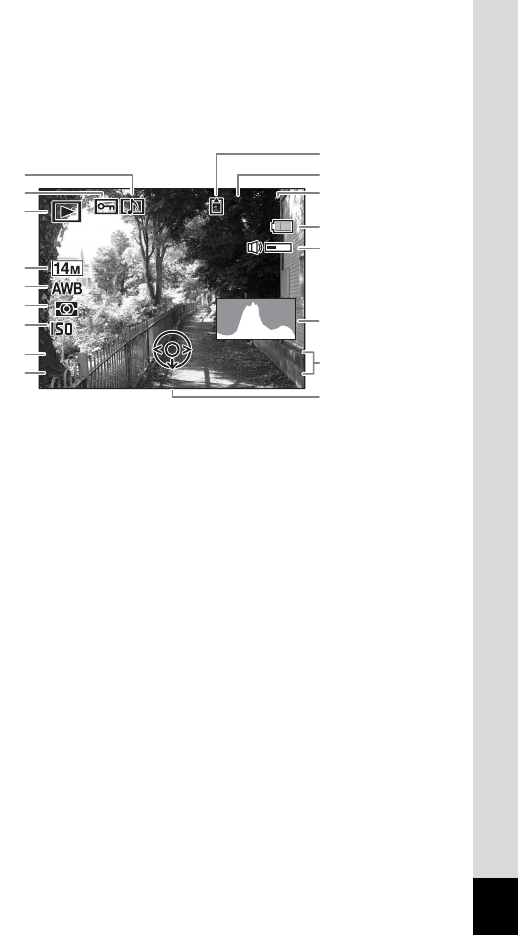Operation Manual
Table Of Contents
- Using Your Camera Safely
- Care to be Taken During Handling
- Contents
- Composition of the Operating Manual
- Camera Features
- 1 Getting Started
- 2 Common Operations
- 3 Taking Pictures
- Taking Still Pictures
- Taking Pictures
- Setting the Shooting Mode
- Using the Face Detection Function
- Taking Pictures Automatically (Auto Picture Mode)
- Taking Pictures in the Custom Settings (Program Mode)
- Taking Pictures in the Basic Mode (Green Mode)
- Using the Zoom
- Taking Pictures of Dark Scenes (Night Scene/Night Scene Portrait/Digital SR/Fireworks/Candlelight Mode)
- Taking Pictures of People (Portrait/Natural Skin Tone Mode)
- Taking Pictures of Children (Kids Mode)
- Taking Pictures of Your Pet (Pet Mode)
- Taking Pictures of Sports and Leisure Activities (Sport/Surf & Snow Mode)
- Framing Your Pictures (Frame Composite Mode)
- Taking Pictures Indoors (Party Mode)
- Taking Pictures of Text (Text Mode)
- Taking Pictures Using the Miniature/HDR Filter
- Using the Camera’s Self-timer
- Taking a Series of Pictures (Continuous Shooting/Burst Shooting Mode)
- Taking Pictures Using the Remote Control Unit (Optional)
- Setting the Shooting Functions
- Selecting the Flash Mode
- Selecting the Focus Mode
- Selecting the Number of Recorded Pixels
- Compensating for Exposure (EV Compensation)
- Correcting the Brightness (D-Range Setting)
- Adjusting the White Balance
- Setting the AE Metering
- Setting the Sensitivity
- Switching the Face Detection Function
- Setting the Shake Reduction Function
- Setting the Instant Review
- Setting the Image Sharpness (Sharpness)
- Setting the Color Saturation (Saturation)
- Setting the Image Contrast (Contrast)
- Setting the Date Imprint Function
- Calling Up a Specific Function
- Recording Movies
- Saving the Settings (Memory)
- Taking Still Pictures
- 4 Playing Back and Deleting Images
- 5 Editing and Printing Images
- 6 Recording and Playing Back Sound
- 7 Settings
- Camera Settings
- Formatting an SD Memory Card
- Changing the Sound Settings
- Changing the Date and Time
- Setting the World Time
- Changing the Display Language
- Changing the Naming System of the Folder
- Changing the Video Output Format
- Adjusting the Brightness of the Display
- Using the Power Saving Function
- Setting the Auto Power Off Function
- Changing the Start-up Screen
- Correcting Defective Pixels in the CCD Sensor (Pixel Mapping)
- Resetting to Default Settings (Reset)
- Camera Settings
- 8 Connecting to a Computer
- 9 Appendix

25
Normal Display/Histogram + Info Display in Playback Mode
(All of the display items are displayed here for explanatory purposes.)
The display shows information such as the shooting conditions. A1 to
A10 appear when “Normal Display” or “Histogram + Info” is selected. B1
to B7 appear only when “Histogram + Info” is selected.
* In “Normal Display”, A7 and A9 disappear if no operation is performed
for two seconds.
* A8 appears only when the volume is being adjusted during playback of
movies, sound files or voice memos (p.117, p.159, p.162).
* A10 appears even when “No Info” is selected, but disappears if no operation
is performed for two seconds. When no operation is performed for two
seconds in “Normal Display” or “Histogram + Info”, only “Edit” disappears.
A1
Playback mode
A8
Volume icon
Q : Still picture (p.116)
A9
Captured date and time (p.46)
K : Movie (p.117)
A10
Four-way controller guide
L : Sound (p.159)
B1
Recorded Pixels (p.92)
A2
Protect icon (p.129)
B2
White Balance (p.96)
A3
Voice memo icon (p.162)
B3
AE Metering (p.98)
A4
Memory status (p.40)
B4
Sensitivity (p.99)
A5
Folder number (p.172)
B5
Shutter speed
A6
File number
B6
Aperture
A7
Battery level indicator (p.35)
B7
Histogram (p.26)
F3.5
F 3 . 5
1/250
1 / 2 5 0
F3.5
1/250
100
1 0 0
-
0038
0 0 3 8
100
-
0038
14:25
1 4 : 2 5
14:25
200
200
200
Edit
Edit
Edit
03/03/2011
0 3 / 0 3 / 2 0 1 1
03/03/2011
A
1
A
2
A7
B7
A9
A10
A5
A6
B1
B2
B3
B4
B5
B6
A8
A4
A
3










